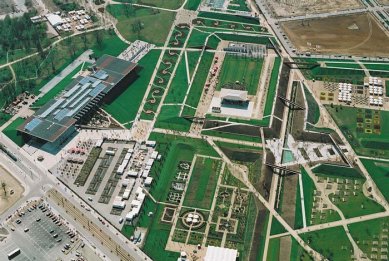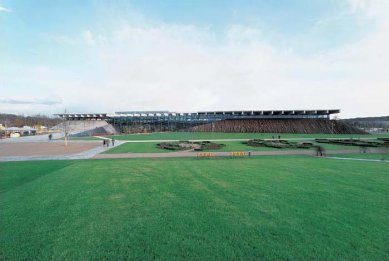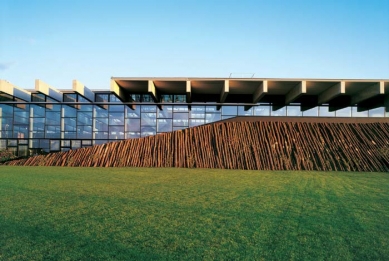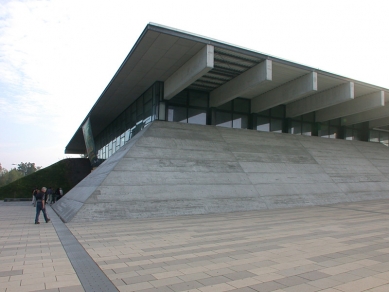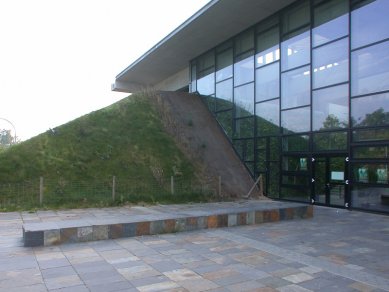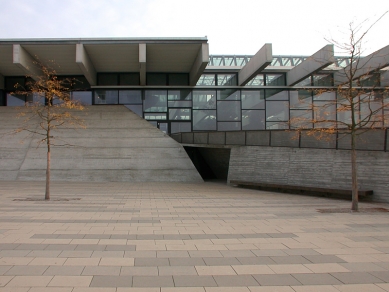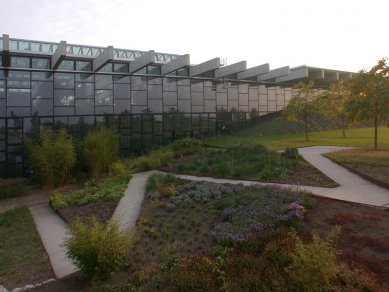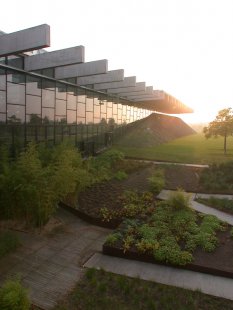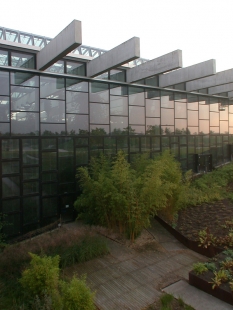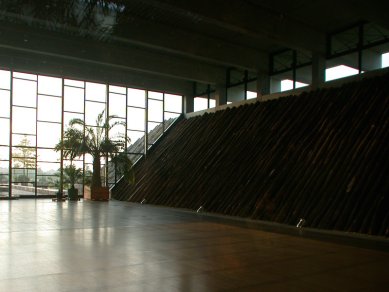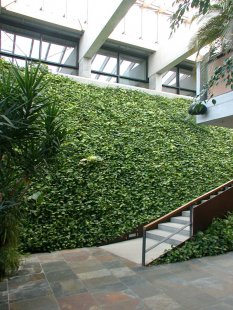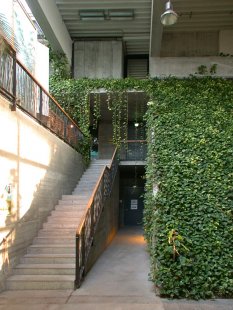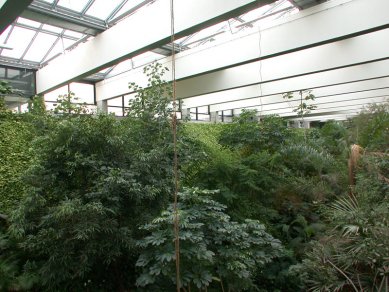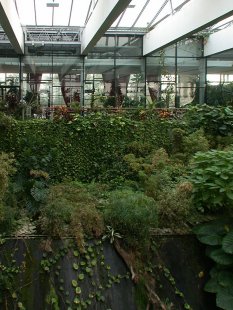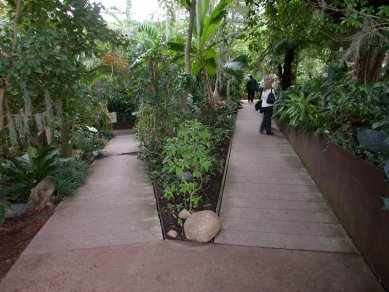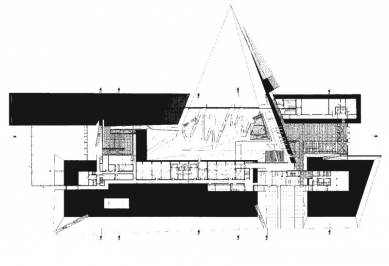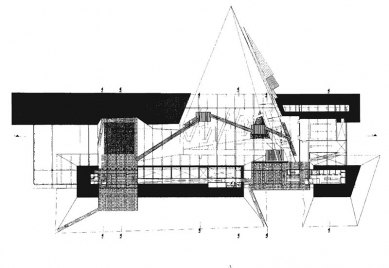
BUGA - Federal Garden Exhibition 2001

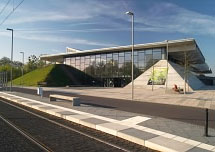 |
After the Federal Garden Exhibition in 2001, the main exhibition hall was rebuilt to reopen to the public on September 13, 2002, under the new name "Biosphere." A new company completely renovated the exhibition hall and created an all-year-round "world of natural phenomena of land, water, and air" in an area of 4,500 m². More than a hundred mature trees were planted, and a humidification system was installed to evoke the impression of the tropics as much as possible. Visitors, who number around 320,000 each year, move across inclined surfaces, suspended bridges, and various height levels among hundreds of plant species living in the rainforest.
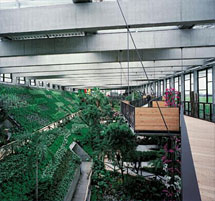 |
This year, Potsdam, already famous for its gardens, lakeside landscapes, and parks, is additionally hosting the Bundesgartenschau (Federal Garden Exhibition). Over a million visitors are expected, who would rather explore the renatured area of the former barracks than stroll through the Sanssouci Palace park or along the Havel River. From the city's perspective, Buga also offers an opportunity to polish the inner-city and adjacent problematic zones. After the massive investments in this temporary event, a restored infrastructure will remain after Buga ends.
The "Island of Friendship," a grotesquely inflated new station and commercial complex that almost cost Potsdam its title as a World Heritage site, also radiates fresh greenery, just like the "Unity Square" and the romantic garden opposite another ambitious project - the reconstruction of the city palace. All of these places are connected by tram line no. 90, which crosses from the busy station to a recreational park. On the tracks are wicker baskets with flowers, and the chipped façade of the university complex in the Old Market shines in bright yellows on sunny days, making one wish for many more years for the unpopular panel building.
Just before arriving at the central Buga area in Bornstedter Feld in the northern part of the city, the atmosphere becomes somewhat darker. A guard tower emerges, followed by life-sized posters of soldiers, and finally, the tram turns into dense underbrush. The ride ends at a slanted concrete wall. From the entrance, the base “Biosphärenhalle” resembles the façade of some fortification. From here, the hall with the overhanging roof extends 200 meters into the park.
One enters military territory with a history of over a hundred years, most recently used by the Soviet army. After the troops were withdrawn, their remnants were transformed into the leitmotif of the Federal Garden Exhibition. In the flat valley, where there was a tank training ground, earth mounds were piled, which serve as a welcome means to divide the land. However, before planting could begin, the mounds had to erode slightly and then be perfected again to be suitable for Buga. Buildings that were less fitting for the landscape play of geometric forms were removed.
The Federal Garden Exhibition - Buga in Potsdam, like its predecessors - must be planned from its end. What counts is what remains. In this case, it is the park that will serve the adjacent newly built housing estate as an area for suburban recreation, and the attraction - the hall, which was necessary for exhibiting weather-sensitive plants, is connected with long-term returns on investment. Therefore, the traditional flower hall in Potsdam is called “Biosphere” and may have been somewhat more expensive than usual. At the end of Buga, it will continue to be operated by a subsidiary running a chain of multiplex cinemas as “World of Natural Experiences.”
There are many examples where the collaboration of entertainment agencies with architects has led to complete disasters, but in this case, it worked. The Berlin architectural firm Barkow/Leibinger won the competition with a design that took the form of an embankment, to which they attached two additional arbitrary mounds, on which the flat roof of the Biosphere is placed. The material covering the mounds varies between exposed concrete, grass, and cladding with oak trunks. Inside, there is the opportunity to place rooms and staircases in the sloping side walls, allowing visitors to appear in the hall each time from a different place. In contrast to the exterior impression of a simple hall, which descends several meters in a longitudinal direction, inside there arises a complex patrolling route on several levels. The path winds through the hall over bridges and waterfalls. Along the way, one encounters not only plants and cut flowers of all kinds but also learns why gardening is “a profession for life” and what to consider when starting a compost. The sloping walls of the hall are at times densely overgrown, creating a sense of luxuriance that is rarely seen outside in the Buga area. The later operator wants to further increase the number of plants and install multimedia technology among them that will elevate the classic tropical greenhouse to a “Biosphere.” This theme inevitably conjures up the image of filigree greenhouses from the nineteenth century. Compared to them, the hall by Barkow/Leibinger appears as a crude block. When the city of Potsdam has embarked on financing such a type of property onto uncertain ground, at least it has invested the budget into a simple and robust construction. The hall fits into the militarily rugged landscape of Buga. Even though the Federal Garden Exhibition is shrouded in the smoke of gunpowder, for the operator, the marketing success of the building was more crucial than the strength of architectural expression.
The English translation is powered by AI tool. Switch to Czech to view the original text source.
4 comments
add comment
Subject
Author
Date
...
Viktor Vlach
01.02.07 11:48
Hurá na Ruzyň
Petr Šmídek
01.02.07 04:04
...
Viktor Vlach
01.02.07 05:45
Hurá do Berlína
Petr Šmídek
01.02.07 06:51
show all comments


